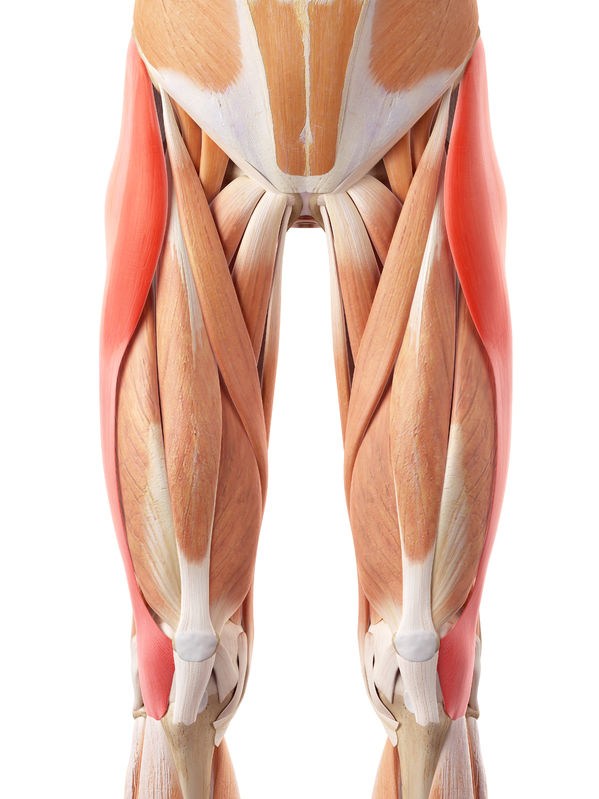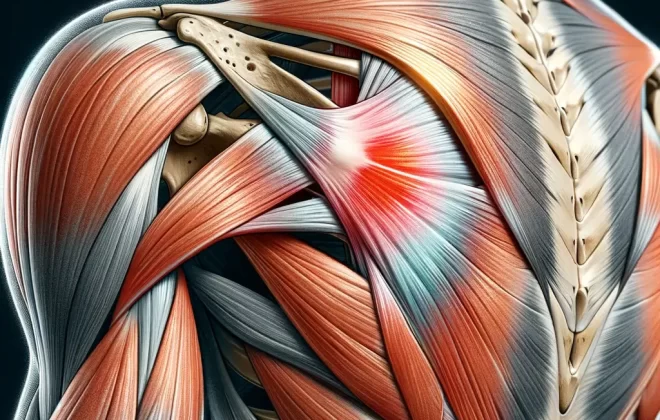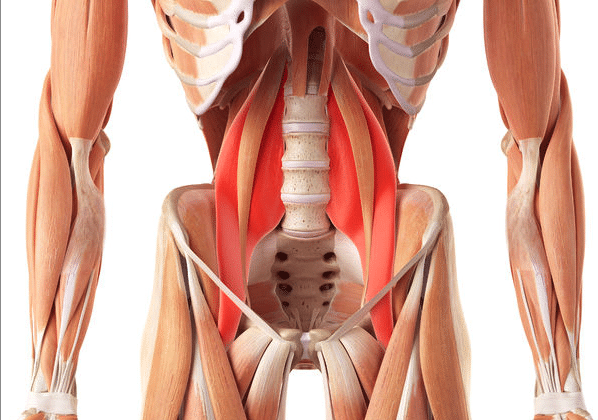The Ultimate Guide to Tensor Fascia Lata Stretch: Improve Flexibility and Relieve Pain
The Tensor Fascia Lata (TFL) muscle is a small muscle located on the outside of the hip that plays a crucial role in supporting our body during everyday activities and sports.
This muscle is responsible for stabilizing the hip and knee joints, which are essential for walking, running, jumping, and other physical activities.
However, a tight TFL muscle can lead to a variety of issues, including lower back pain, hip pain, knee pain, and IT band syndrome. This is why it’s crucial to keep this muscle flexible and mobile through regular stretching, especially if you’re an active weekend warrior.

In this guide, we will discuss the benefits of performing TFL stretches and provide you with some of the best stretches that you can incorporate into your daily routine.
By practicing these stretches, you can improve your mobility, reduce your risk of injury or tfl pain, and enhance your overall performance in daily activities and sports.
So, let’s get started!
Anatomy of Tensor Fascia Lata Muscle
The tensor fascia lata (TFL) muscle is a small but mighty muscle located on the lateral side of outer leg below the hip. It originates from the anterior superior iliac spine (ASIS) of the pelvis and inserts into the iliotibial band (IT band), a thick band of connective tissue that runs down the outside of the thigh and attaches to the knee.
The main function of the TFL muscle is to assist in the stabilization of the hip and knee joints during movement. It works in conjunction with other muscles in the hip and thigh, such as the gluteus medius and minimus, to control hip abduction (movement away from the midline of the body) and rotation.
The TFL muscle is also closely related to the IT band via its direct connection, which is a critical structure for both hip mobility and knee stability during weight-bearing activities.
The TFL helps to support and tension the IT band, which assists in the stabilization of the knee during activities such as running, jumping, and squatting.
In addition to its role in hip and knee stability, the TFL muscle also plays a role in pelvic stability and posture. A tight or overactive TFL muscle can contribute to imbalances in the hips upper knee and pelvis, leading to postural issues and even low back pain.
Signs and Symptoms of Tensor Fasciae Latae Pain
When the tensor fasciae latae muscle becomes tight or painful, it can lead to a range of issues chronic pain and discomforts. Here are some of them:
Hip pain and hip tightness.
The TFL muscle is responsible for stabilizing the hip joint during movement, and when it becomes tight or strained, it can cause pain and discomfort in the hip area. This can make it difficult to perform activities such as running, walking, and climbing stairs.
IT band syndrome.
The TFL muscle is connected to the iliotibial band (IT band), a thick band of connective tissue that runs down the outside of the thigh. When the TFL muscle becomes tight or overworked, it can put pressure on the IT band, causing pain and inflammation. This can lead to a condition known as IT band syndrome, which is characterized by pain and tenderness in the outer part of the knee.
Lower back pain
When the TFL muscle is tight or overworked, it can cause the pelvis to tilt forward (anterior pelvic tilt), leading to an excessive arch in the lower back. This can put stress on the lower back muscles and lead to pain and discomfort.
Knee pain
As mentioned earlier, tightness in the TFL muscle can lead to IT band syndrome, which can cause pain and inflammation in the outer part of the knee. In addition, the TFL muscle also plays a role in stabilizing the knee joint during movement, and when it becomes tight or strained, it can cause pain and discomfort in the knee area.
Finally, compensatory muscle imbalances can occur when the TFL muscle is tight or painful. These imbalances can cause other muscles to become overworked and strained, leading to pain and discomfort in other areas of the body.
Top Tensor Fascia Lata Stretches to Improve Flexibility and Reduce Pain
Here are some of the top TFL stretches that you can incorporate into your stretching routine to reduce or eliminate painful tfl.
- Seated TFL stretch
- Sit on the ground with your legs straight out in front of you
- Cross your right ankle over your left knee, placing your right foot flat on the ground
- Place your right hand behind your back, and your left hand on your right knee
- Gently twist your torso to the right, using your left hand to guide your knee toward your chest
- Hold the stretch for 30 seconds, then switch sides
- Standing TFL stretch
- Stand with your feet hip-width apart
- Cross your right ankle over your left ankle, and place your right hand on your hip
- Reach your left arm over your head and toward the right
- Hold the stretch for 30 seconds, then switch sides
- Side-lying TFL stretch
- Lie on your right side with your legs straight
- Bend your left knee and bring your left foot towards your buttocks
- Reach back with your left hand and grab your ankle
- Gently pull your ankle towards your buttocks to feel a stretch in your TFL muscle
- Hold the stretch for 30 seconds, then switch sides
- Foam roller TFL stretch
https://vimeo.com/user8510249/review/234224819/5d00af6631
- Lie on your right side with a foam roller under your right hip
- Cross your left leg over your right leg and place your left foot on the ground
- Use your left foot to roll the foam roller up and down your hip and outer thigh
- Spend extra time on any tender spots
- Repeat on the other side
Tips for proper form and technique while stretching
- Keep your back straight and your shoulders down throughout each stretch
- Breathe deeply and relax into the stretch
- Only stretch to the point of mild discomfort, never pain
- If you have a history of hip or knee injuries, consult with your healthcare provider before attempting these stretches
Modifications for varying fitness levels
- If you have limited mobility, use a yoga strap or towel to help guide your knee toward your chest in the seated TFL stretch
- For a deeper stretch in the standing TFL stretch, reach your hand towards the ceiling or hold onto a sturdy object for support
- If the side-lying TFL stretch is too intense, prop yourself up on your elbow or use a pillow for support
- If the foam roller TFL stretch is too intense, use a tennis ball instead of a foam roller or skip this stretch altogether.
Additional TFL Stretches and Exercises
To prevent and alleviate tensor fascia lata pain issues, incorporating additional TFL stretches and exercises into your workout routine can be beneficial. In this article, we will cover the following:
Dynamic TFL stretches for warming up: These stretches involve moving through a range of motion to warm up the TFL muscle and surrounding muscles before exercise. Examples include walking lunges with a torso twist and side shuffles.
a. High knee walks: Start by standing upright with your feet hip-width apart. Raise your right knee toward your chest and grab it with both hands. Hold for a few seconds, then release and step forward. Repeat with the left knee and alternate for 10-12 repetitions.
b. Lateral lunge with reach: Stand with your feet hip-width apart and step out to the side with your left leg, bending your left knee and keeping your right leg straight. Reach your left arm down towards your left foot and hold for a few seconds. Return to your starting position and repeat on the other side. Alternate for 10-12 repetitions.
Strengthening exercises for the TFL muscle and surrounding muscles: Strengthening exercises help to balance the TFL muscle with other muscles in the hip and upper leg together. Examples include lateral band walks, clamshells, and squats.
a. Clamshell exercise: Lie on your side with your knees bent and feet together. Keeping your feet touching, lift your top knee as high as you can without moving your pelvis or lower back. Lower back down and repeat for 10-12 repetitions. Switch sides and repeat.
b. Bridge with one leg and lift: Lie on your back with your knees bent and feet flat on the floor. Lift your hips off the ground, keeping your shoulders and feet on the ground. Hold for a few seconds, then lift your right leg towards the ceiling, keeping it straight. Lower it back down and repeat with the left leg. Alternate for 10-12 repetitions.
Yoga poses that target the TFL muscle: Yoga poses can help to stretch and strengthen the TFL muscle. Examples include Pigeon Pose, Half Moon Pose, and Warrior II Pose.
a. Low lunge with twist: Start in a lunge position with your left foot forward and your right leg back. Place your right hand on the ground next to your left foot and twist your torso towards your left, knee bent back, reaching your left arm up towards the ceiling. Hold for a few breaths, then release and switch sides.
b. Pigeon pose: Start on all fours with your hands directly under your shoulders and your knees under your hips. Bring your right knee towards your right hip extension your hand and extend your left leg behind you. Lower down onto your forearms and hold for a few breaths. Release and switch sides.
Pilates exercises for TFL muscle balance and flexibility: Pilates exercises can help to improve TFL muscle balance and flexibility. Examples include the side-lying leg lift and the side-lying clamshell.
a. Single leg circle: Lie on your back with your legs extended toward the ceiling. Keep your left leg still and circle your right leg clockwise, then counterclockwise, making sure to keep your hips forward pelvis stable. Repeat with the left leg.
b. Mermaid stretch: Sit on the ground with your legs to the side, knees bent and feet behind you. Place your left hand on the ground behind you and reach your right arm up toward the ceiling. Side bend towards your left hand and hold for a few breaths. Release and switch sides.
Frequently Asked Questions (FAQ)
-
How often should I perform tensor fascia lata stretches?
The frequency of performing tensor fascia lata (TFL) stretches depends on individual needs and goals. However, to improve flexibility and reduce pain, it is recommended to perform TFL stretches at least two to three times per week. It is important to avoid overstretching and to gradually increase the intensity and duration of the stretches.
-
What is the best time to perform TFL stretches?
There is no one best time to perform TFL stretches, as it depends on individual schedules and preferences. Some people may prefer to perform stretches before a workout to warm up the muscles, while others may prefer to stretch after a workout to cool down and prevent muscle soreness. Some may also choose to stretch during a break in their workday to alleviate tension and discomfort. The key is to find a time that works for you and to consistently incorporate TFL stretches into your routine.
-
Can TFL stretches help prevent injury?
Yes, TFL stretches can help prevent injury by improving flexibility and reducing muscle tension in the hip, thigh, and knee areas. A tight TFL muscle can contribute to imbalances in the lower body, leading to overuse injuries such as IT band syndrome, knee pain, and hip pain. Incorporating TFL stretches into your routine can help prevent these injuries by promoting muscle balance and reducing tension in the surrounding muscles.
-
Are there any precautions or contraindications for TFL stretching?
It is important to listen to your body and avoid overstretching or forcing the stretch beyond your comfortable range of motion. If you have a history of hip, knee, or lower back injuries, or have undergone surgery in these areas, it is recommended that you consult with a healthcare professional before performing TFL stretches. Additionally, pregnant women should consult with their healthcare provider before performing any stretching or exercise program.
Tips for Maintaining TFL Muscle Health
Maintaining the health of the tensor fascia lata (TFL) muscle is essential for overall mobility and athletic performance.
Here are some tips for keeping your TFL muscle in optimal condition.
Firstly, it’s important to maintain flexibility and strength in the TFL muscle through regular stretching and strength training exercises. Incorporating a variety of stretches, such as those mentioned earlier, into your daily routine can help improve your TFL muscles’ flexibility and reduce the risk of injury.
Proper footwear is also essential in maintaining TFL muscle health. Wearing shoes with proper arch support can help reduce the strain on the TFL muscle and prevent pain and tightness. Avoid shoes with high heels, as they can put extra pressure on the TFL muscle and exacerbate any existing issues.
Incorporating TFL stretches into your daily routine can be beneficial for maintaining muscle health. Simple stretches like the seated TFL stretch and the foam roller TFL stretch can be done at home and can help keep your TFL muscle loose and flexible.
Finally, it’s important to seek professional guidance from physical therapists and trainers. They can provide you with personalized advice on how to properly stretch and strengthen the TFL muscle, as well as address any issues or imbalances that may be present.
Conclusion
In conclusion, maintaining the health of the tensor fascia lata muscle is crucial for daily activities and sports performance.
Incorporating regular TFL stretches and exercises can help improve flexibility, reduce pain and prevent injury.
Remember to maintain a balance of strength and flexibility, wear proper footwear, and seek professional guidance when needed.
By making TFL stretches a part of your daily routine, you can improve your overall physical health and well-being.
Sam Visnic
Most Popular Posts
Categories
- Deep Gluteal Pain Syndrome (8)
- Deltoids (2)
- Foam Rolling (2)
- Glutes (9)
- Hamstrings (5)
- Hypnosis for Pain (3)
- Lats (2)
- Levator Scapulae (4)
- Lifestyle (8)
- Massage Therapy (39)
- Mobility (21)
- Movement and Exercise (19)
- Muscles (22)
- Nutrition (2)
- Obliques (1)
- Pain (25)
- Pectorals (3)
- Piriformis (3)
- Plantar Fasciitis (11)
- Psoas (11)
- Quadratus Lumborum (3)
- Quadriceps (2)
- Rhomboids (3)
- Sciatica (1)
- Serratus Anterior (1)
- SI Joint (14)
- Sternocleidomastoid (1)
- Stretching (18)
- Subscapularis (1)
- TMJ (2)
- Trapezius (1)
- Uncategorized (12)









